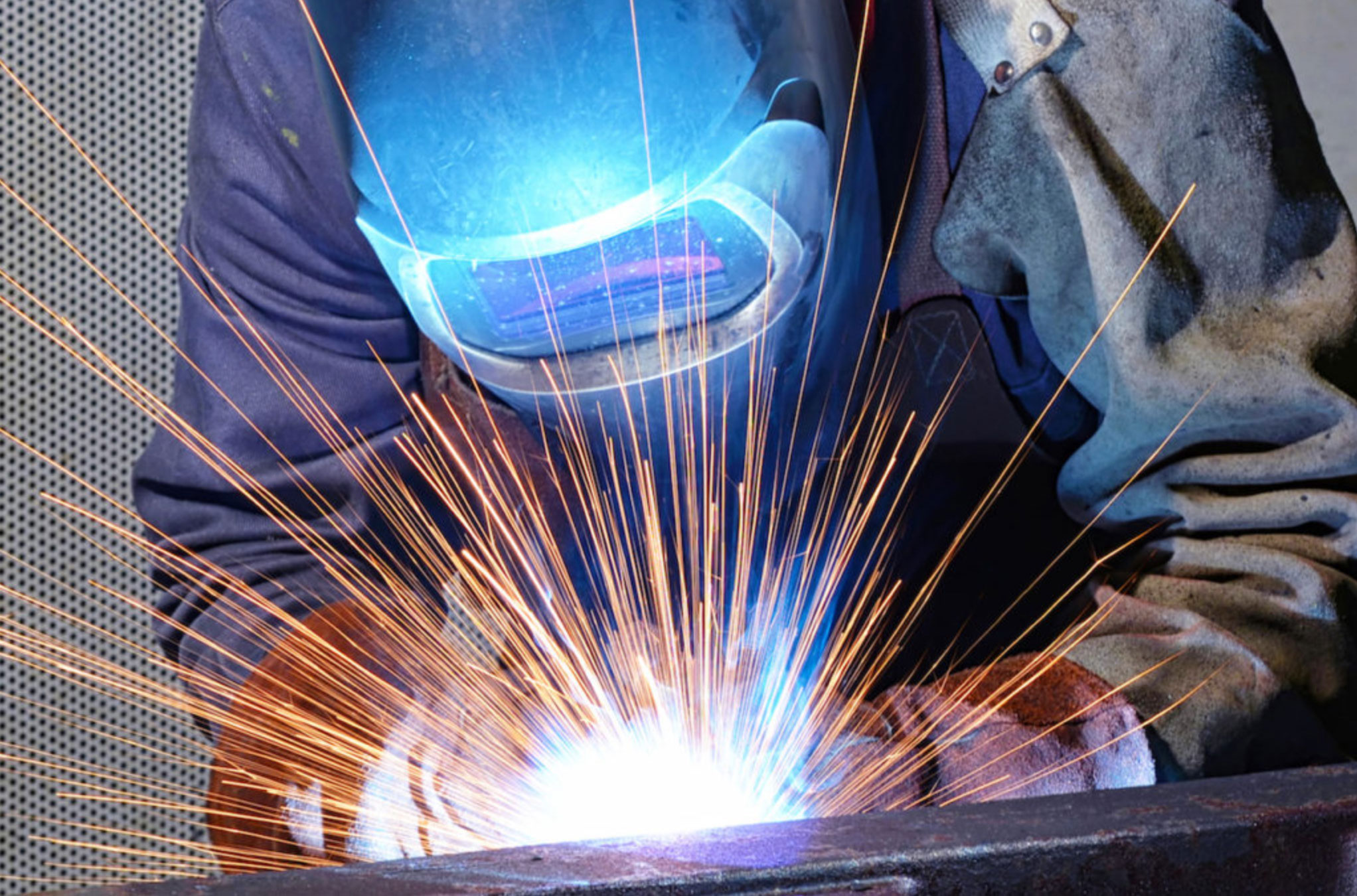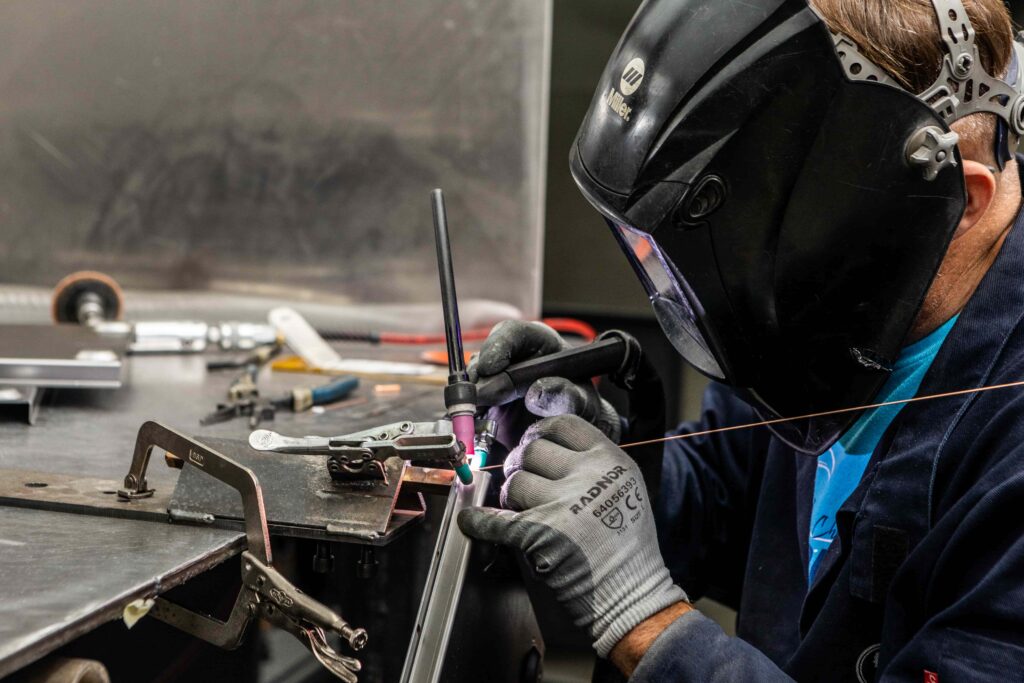Comprehending the Different Types of Welding Techniques and Services Available

Review of Welding Strategies
Welding techniques encompass a varied series of methods used to sign up with products together permanently. One usual method is arc welding, which involves producing an electrical arc between the base and an electrode product to melt and fuse them with each other. This technique is versatile and can be utilized with different metals, making it one of one of the most widely used welding processes.

Furthermore, TIG welding, or Gas Tungsten Arc Welding (GTAW), is a precise and tidy welding approach that uses a non-consumable tungsten electrode to create the weld. TIG welding is frequently utilized for thinner materials and supplies exceptional control over the welding procedure. Generally, recognizing these different welding methods is crucial for choosing one of the most ideal approach for different jobs.
Frequently Utilized Welding Techniques
A variety of commonly used techniques are utilized in the field of welding to successfully sign up with materials together. One of the most commonly made use of strategies is Gas Metal Arc Welding (GMAW), likewise known as MIG welding. This method makes use of a cable electrode that is fed via a welding gun, in addition to a protecting gas to safeguard the weld from contaminants airborne. One more common approach is Shielded Steel Arc Welding (SMAW), or stick welding, which uses a flux-coated electrode to develop the weld. Tungsten Inert Gas (TIG) welding is favored for its precision and versatility, using a non-consumable tungsten electrode to produce the weld. Flux-Cored Arc Welding (FCAW) is generally utilized in industrial setups due to its high welding speed and transportability. Additionally, Immersed Arc Welding (SAW) is optimal for creating deep welds on thick materials. These commonly made use of welding methods provide to various requirements and materials, giving choices for different welding applications.
Advanced Welding Solutions
Structure upon the foundation of generally used welding techniques, the realm of innovative welding solutions incorporates cutting-edge strategies and innovations that push the borders of accuracy and effectiveness in material joining processes. Advanced welding solutions usually involve specialized techniques such as laser welding, electron beam of light welding, and friction stir welding. Laser welding uses an extremely concentrated beam to precisely join steels with moved here marginal heat-affected areas, making it perfect for complex or delicate parts. Electron beam welding, on the other hand, employs a high-velocity electron beam of light to develop deep weld infiltrations in materials like aerospace alloys or dissimilar steels. Rubbing stir welding, a solid-state joining procedure, makes it possible for the welding of materials that are challenging to fuse utilizing standard approaches, like light weight aluminum and copper. These advanced techniques provide enhanced control over the welding procedure, causing more powerful, extra sturdy welds with decreased distortion and enhanced overall quality.
Specialized Welding Techniques

Another specialized welding strategy is laser beam of light welding, where a very concentrated beam is utilized to join metals with marginal heat-affected areas and distortion. This method is typically utilized in markets needing high accuracy and tidiness, such as electronic devices and clinical device production. Additionally, eruptive welding is an one-of-a-kind strategy that website here utilizes regulated nitroglycerins to bond dissimilar metals together, developing solid and trustworthy joints. These specialized welding techniques display the variety and advancement present in the field of welding, providing solutions for a large range of commercial applications.

Choosing the Right Welding Refine
With different welding methods readily available, it is critical to think about aspects such as the kind of metal, thickness, joint design, and desired end outcome when choosing the right welding process. Amongst the common welding techniques are Gas Metal Arc Welding (GMAW), Protected Steel Arc Welding (SMAW), Gas Tungsten Arc Welding (GTAW), and Flux-Cored Arc Welding (FCAW) GMAW, likewise recognized as MIG welding, is suitable for welding thin to thick steels and is flexible in numerous positions.
Final Thought
In conclusion, recognizing the various types of welding strategies and services available is crucial for choosing the right technique for a specific project. By being aware of the frequently used welding techniques, progressed welding solutions, and specialized strategies, individuals can make enlightened decisions to ensure the success of their welding tasks. It is essential to think about factors such as materials, task demands, and budget when picking the most ideal welding procedure.
From conventional approaches like stick welding to advanced procedures such as laser welding, the globe of welding supplies a multitude of alternatives for signing up with metals together.Additionally, TIG welding, or Gas Tungsten Arc Welding (GTAW), is a accurate and tidy welding approach that uses a non-consumable tungsten electrode to create the weld. Advanced welding services often involve specialized techniques such as laser welding, electron beam of light welding, and friction mix welding. Among the typical welding methods are Gas Metal Arc Welding (GMAW), Shielded Metal Arc Welding (SMAW), Gas Tungsten Arc Welding (GTAW), and Flux-Cored Arc Welding (FCAW) By being aware of the commonly utilized welding methods, advanced welding services, and specialized techniques, individuals can make educated decisions to ensure the success of their welding tasks.